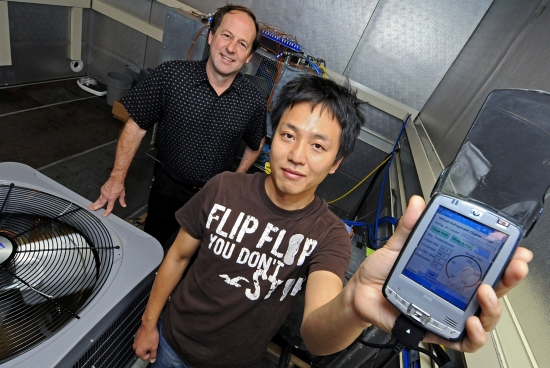
Eco Factor: Energy-saving technology developed make air conditioners green.
Engineers at the Purdue University have developed a technique that saves energy and servicing costs by indicating when air conditioners are low on refrigerant, preventing the units from working overtime. The new “virtual refrigerant charge sensor” is particularly practical for automotive air conditioners, which tend to leak refrigerant more than other types of units, and also for household central air conditioning units.
Maintaining the proper “charge,” or amount of refrigerant in a system, saves energy because air conditioners low on refrigerant must operate longer to achieve the same degree of cooling as properly charged units. Conventional practices to check the amount of refrigerant in the AC requires a technician to remove the entire refrigerant and weigh it, a procedure that requires a vacuum pump and is quite time consuming.
The new alternative works by using sensors to monitor the temperature of refrigerant at various points along the tubing in an air-conditioning unit. The technique is easy to use because the sensors are simply attached to the outside of the tubing. Researchers tested the system on various types of air conditioners running on conventional refrigerants, including R-22 and the more environmentally friendly R-410A, which is replacing R-22 in the latest units.
In air conditioning and refrigeration systems, liquid refrigerant evaporates in a heat exchanger called an evaporator, cooling the air. The refrigerant vapor turns back into a liquid in another heat exchanger called a condenser. During these evaporation and condensing steps, the refrigerant undergoes dramatic temperature changes.
Automotive air conditioning units equipped with the new refrigerant-charge system could activate a warning light on a car’s dashboard. Technicians servicing home air conditioners might simply plug a personal digital assistant into the unit to read the refrigerant-charge information, Braun said.
Via: Purdue University [Press Release]




